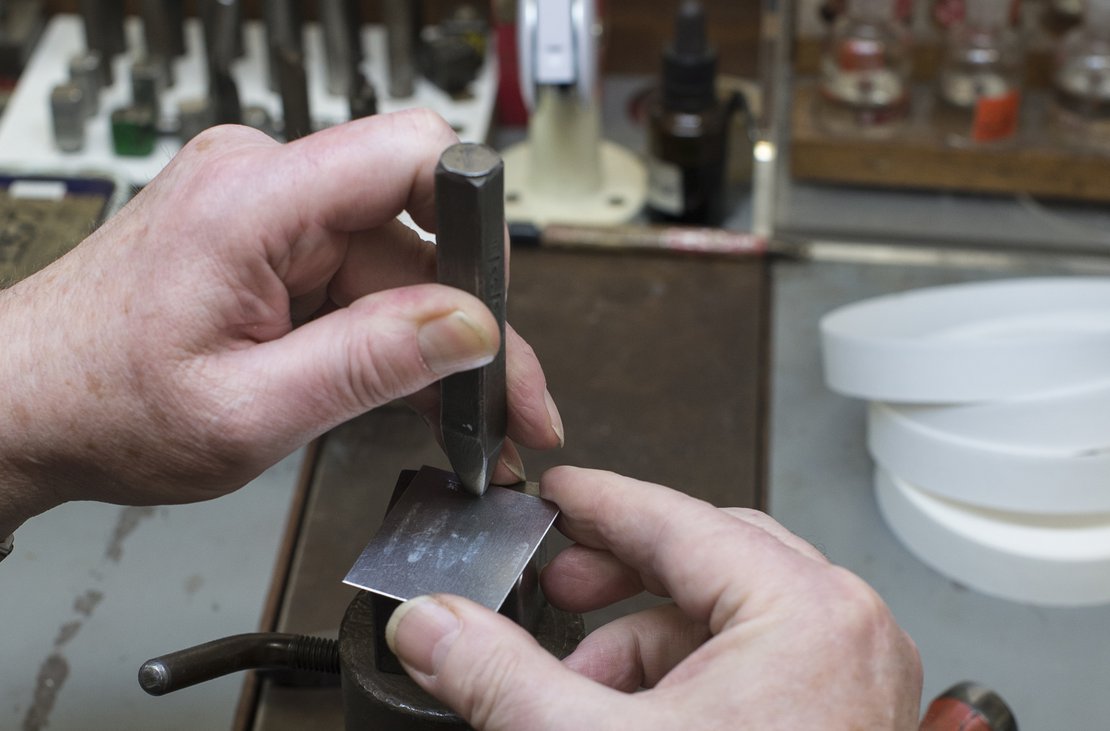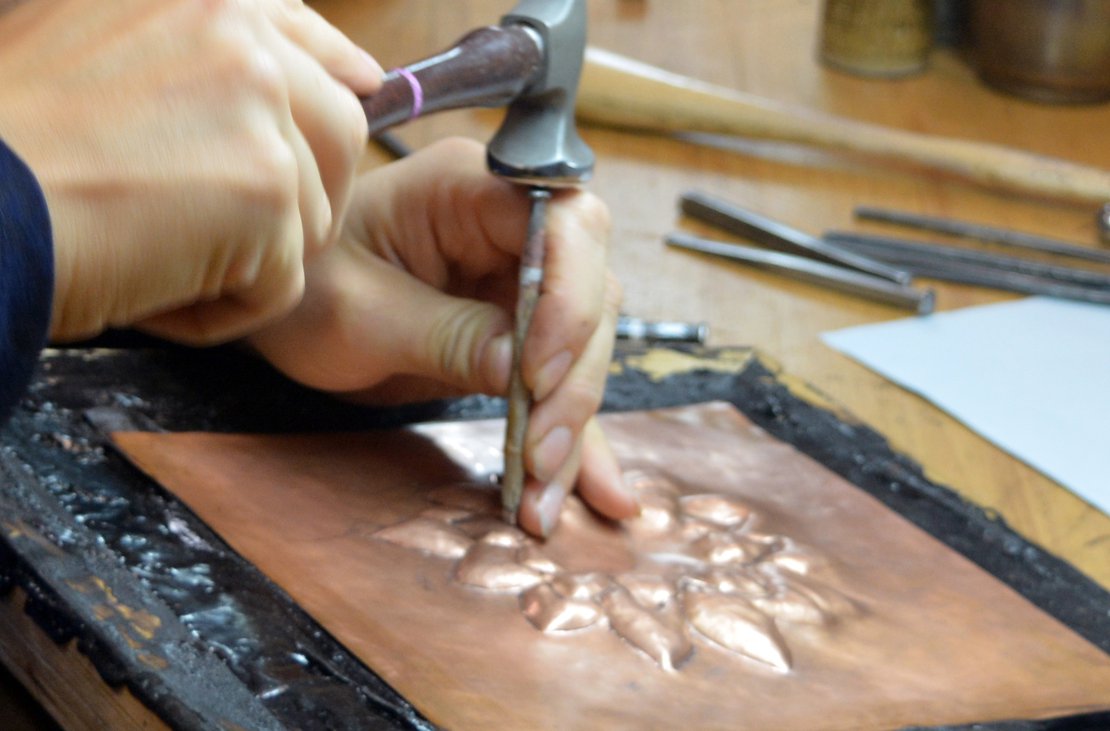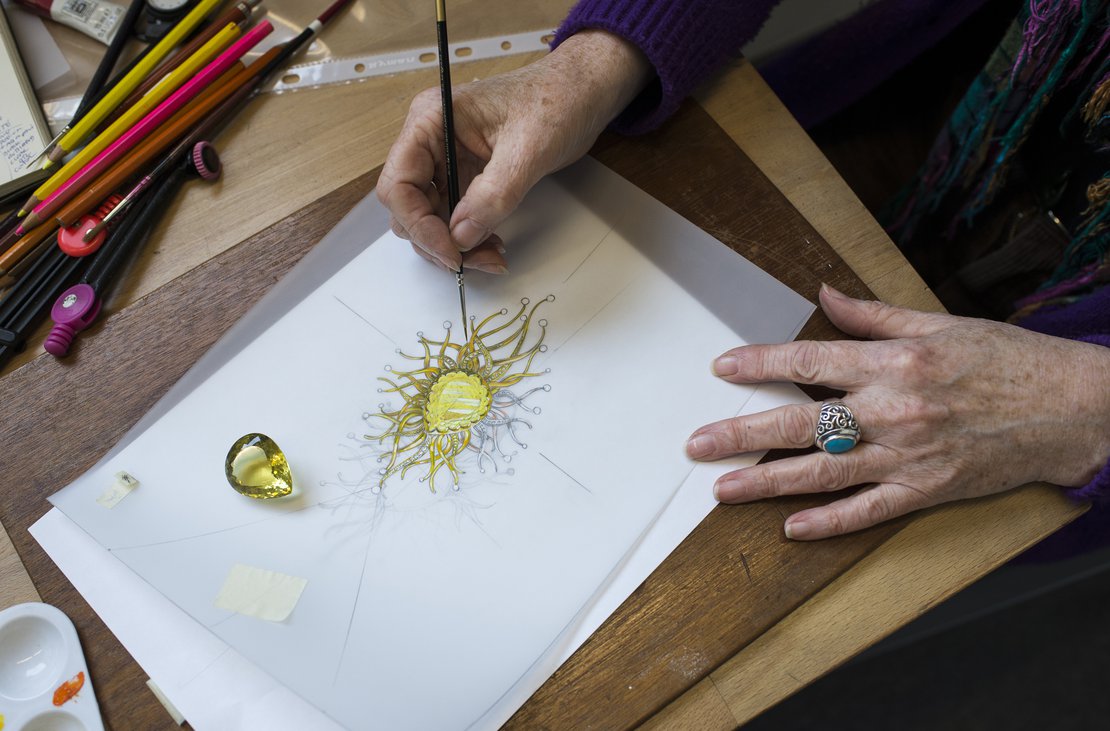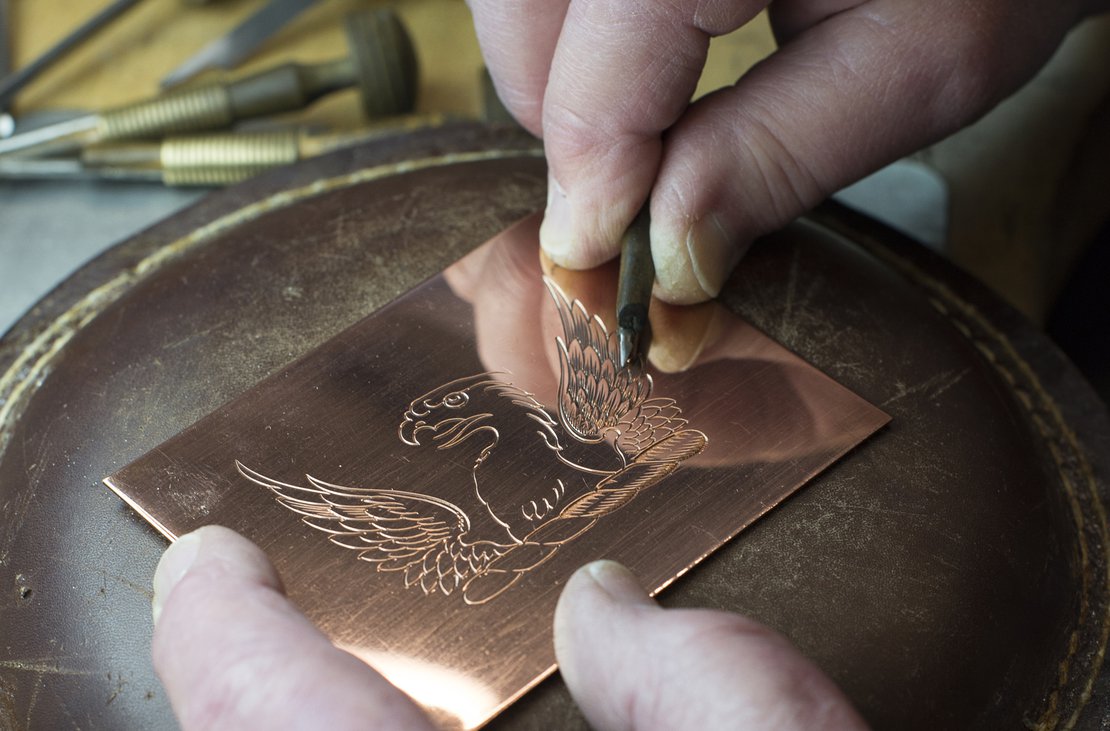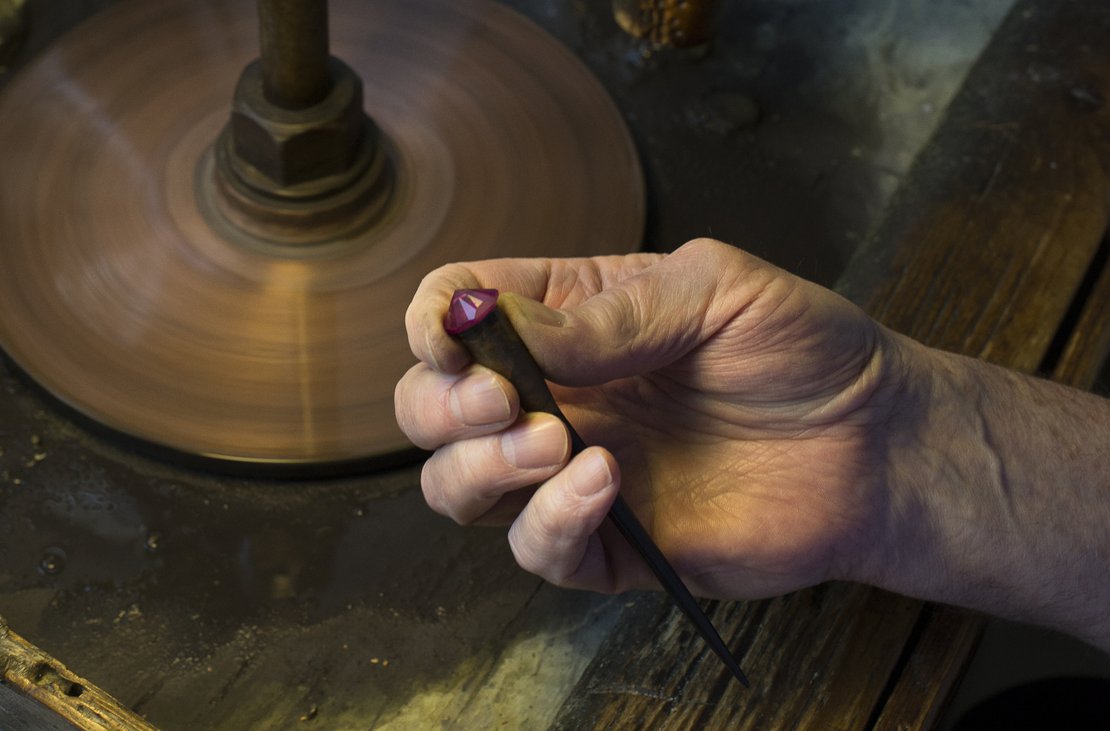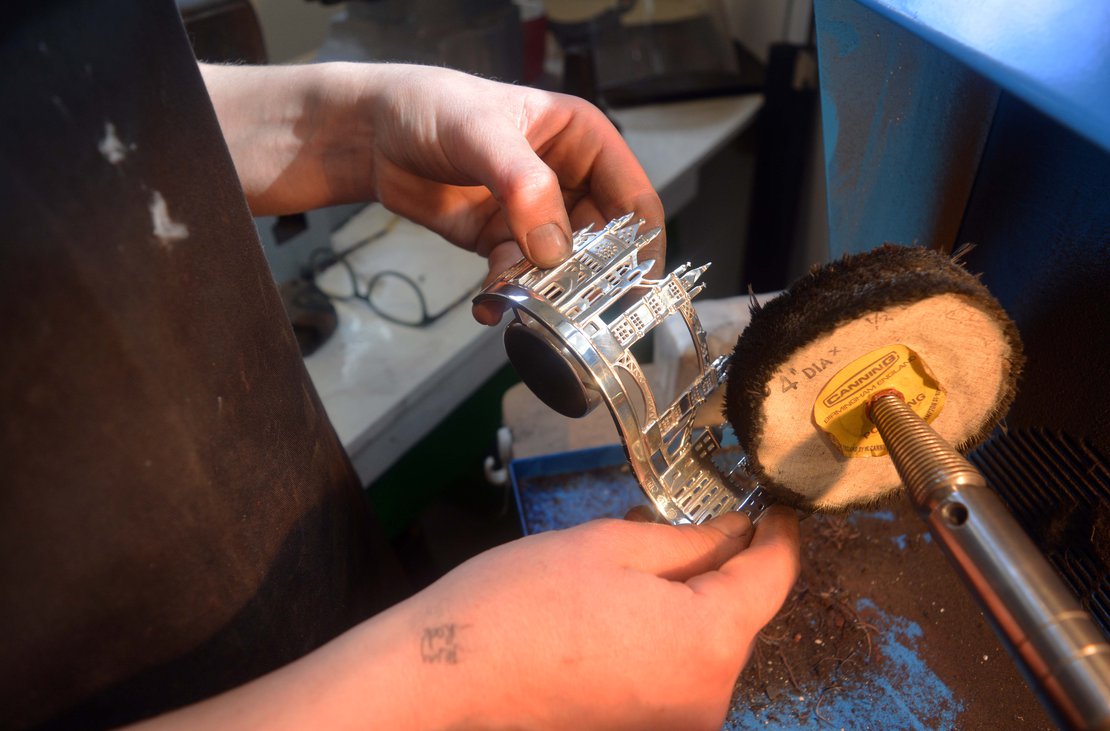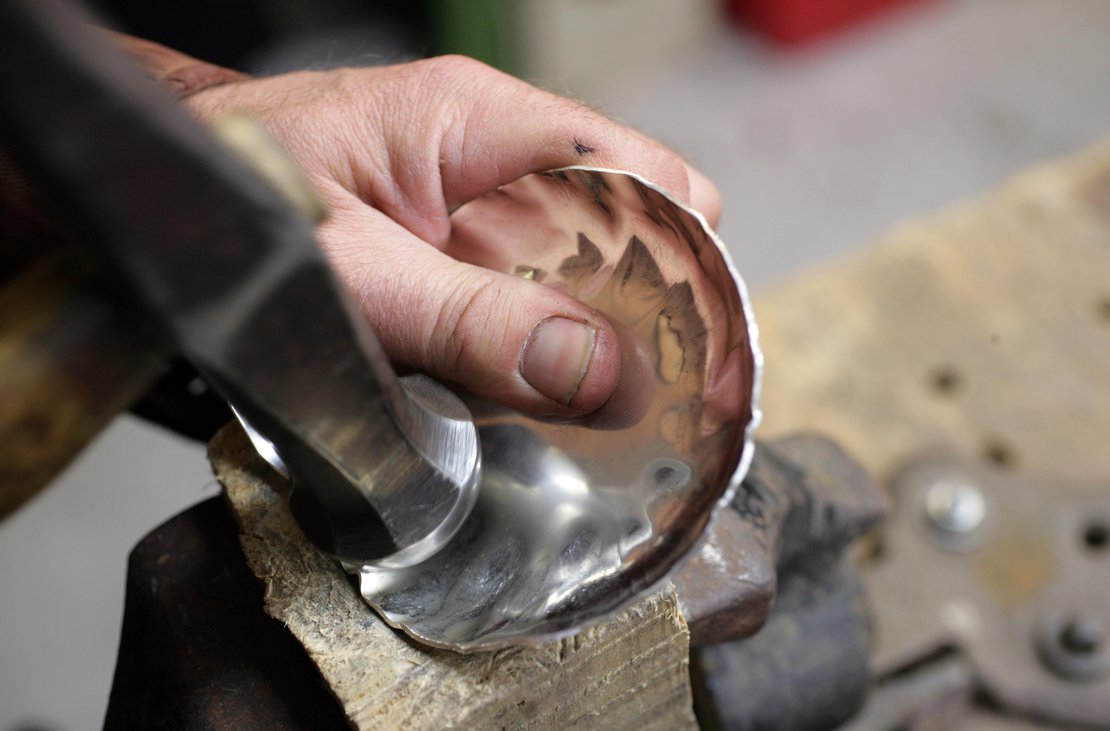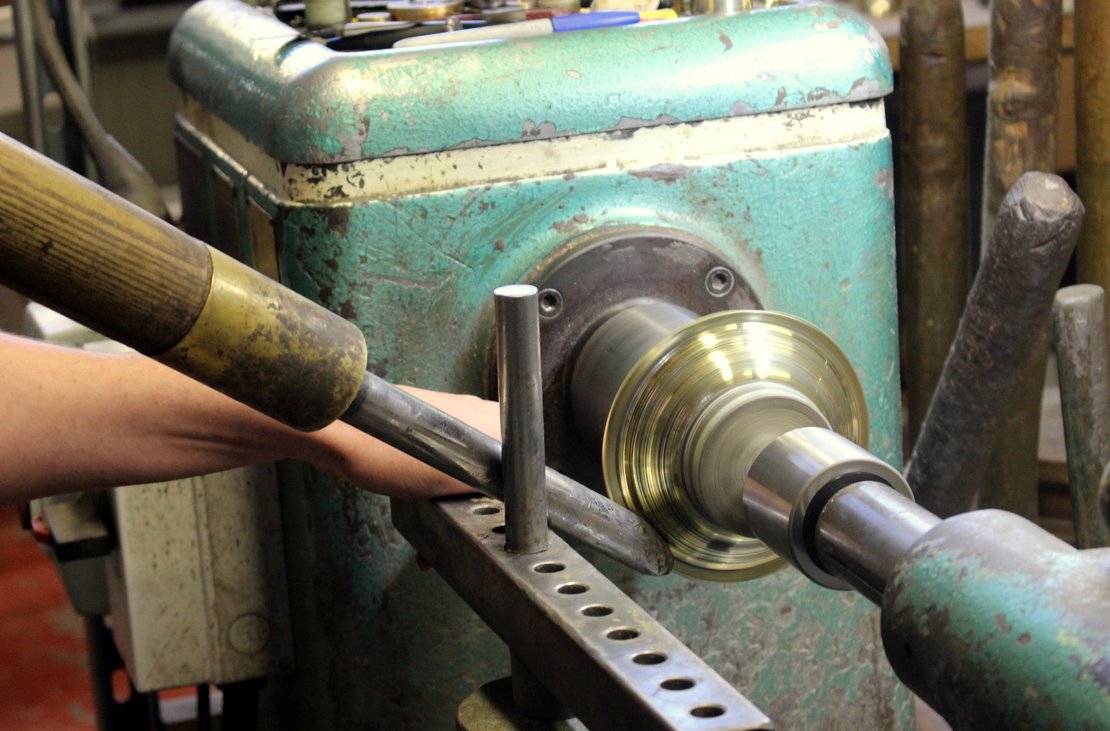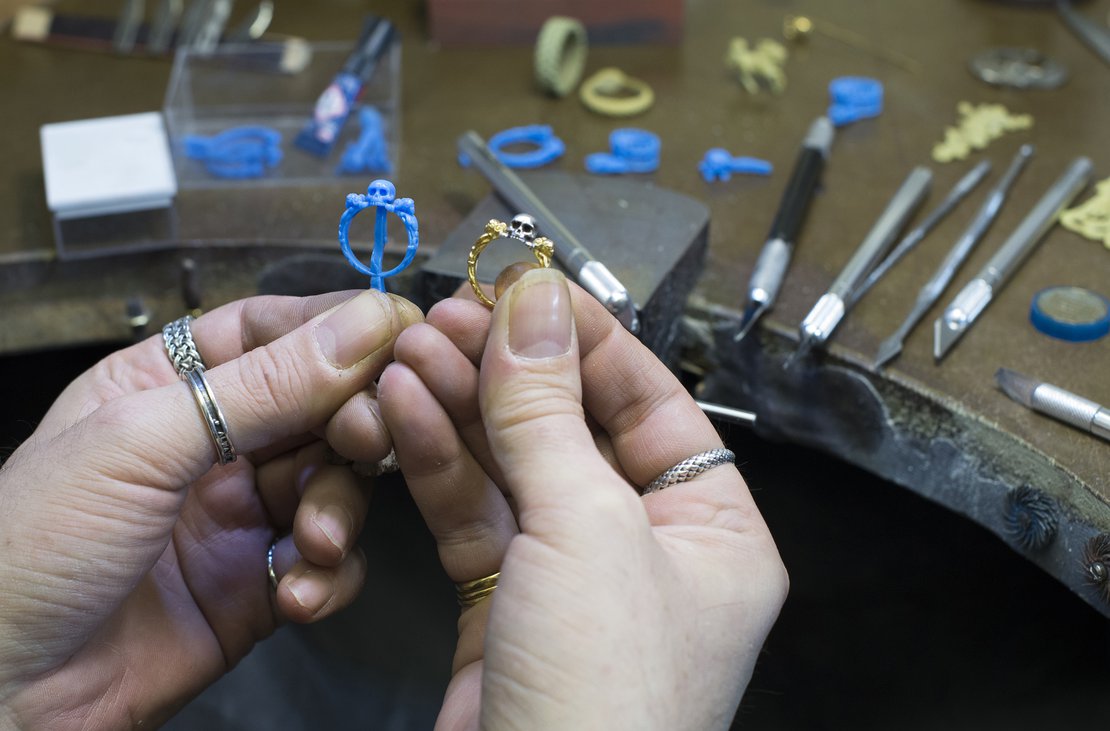Smallworker
Smallwork covers the production and manufacture of pieces of object d’art made in precious metals.
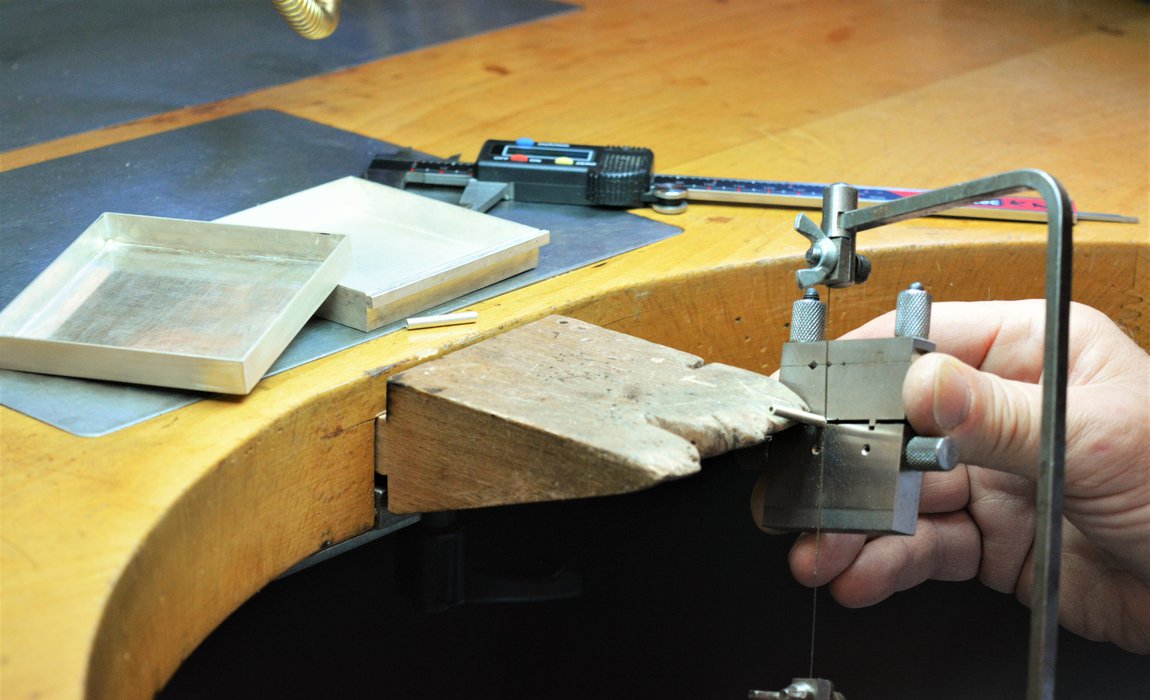
A smallworker is a metalworker who crafts small scale work in precious metal. Typically, smallwork includes an intricate mechanism, hidden feature or an elaborate surface decoration.
“Carl Fabergé, goldsmith to the Russian Tsar, and best known for producing Imperial Easter Eggs, was one of the most accomplished and famous smallworkers of the 19th and 20th centuries.”
What personal attributes are useful for a smallworker?
To be a smallworker you need to be:
- Interested in craft and design
- Interested in working with precious metals
- Good at working with your hands and take pleasure in practical work
- Detail oriented
- Creative and artistic – the ability to draw will be advantageous
- A good listener and communicator – you might receive instruction from a client and will need to work with them to correct any design flaws
- Trustworthy – as you will be dealing with expensive material
- Willing to collaborate – as a smallworker it is unlikely that you will be able to carry out every skill yourself and you might work with other craftspeople such as spinners, polishers, engravers, clock makers or setters to complete the piece of work
- Patient and self-disciplined with the ability to work on a project for prolonged periods of time
Smallworkers are excellent communicators because they can understand clients and their designs, they are also able to explain how they will work on a commission. Many smallworkers will have a background in silversmithing or jewellery making. They will be creative not only when they are producing their own designs but also when coming up with practical solutions, for example by making their own tools. Accomplished smallworkers learn from those that are more skilled and visit historic examples in museums and galleries. Some smallworkers may also specialise in a decorating technique such as engraving, chasing, enamelling or stone-setting.
What will my working life be like as a smallworker?
Smallworkers work in a workshop or studio, normally from a work bench. You can either be self-employed or employed to work for a company. If you work for a company you are part of a bigger team, earn a wage and have a fixed working schedule, normally from Monday to Friday. If you are self-employed you may have a workshop at home or shared with other craftspeople and you may engage directly with customers to create bespoke pieces.
As a self-employed smallworker you might be approached by a company with designs that need to be translated into metal. Alternatively, you might decide to design and sell your pieces. Some smallworker Designer-makers will produce pieces that can be retailed through a gallery or directly to customers at craft fairs for example. In this case you will need to develop good business, finance, marketing and interpersonal skills.
Within your work you must be able to adhere to industry health and safety requirements; understand the safe storage, handling and disposal of harmful materials used in the workshop including the risks involved; know how to safely operate and maintain your machines and tools and learn how to adequately process your materials.
Within your work you must be able to adhere to industry health and safety requirements; understand the safe storage, handling and disposal of harmful materials used in the workshop including the risks involved; know how to safely operate and maintain your machines and tools and learn how to adequately process precious metals their alloys and solders.
As a smallworker you will use skills and techniques including making items in accordance with drawn, verbal or written Instructions to the dimensions given; applying relevant smallwork and silversmithing skills and manufacturing techniques using the material supplied; sawing; filing; shaping; box work; fitting; hammering and raising; soldering; annealing and assembly.
You can expect to work with all carats of gold; silver; platinum, base metals and solders. And you will learn how to use tools including files; measuring and marking-out tools; soldering equipment; a range of hammers and mallets; vices; pliers, saws; snips; emery papers; a loupe; and various hand tools. You should receive training in all of these as required.
A day in the life of a smallworker - Lewis Towens
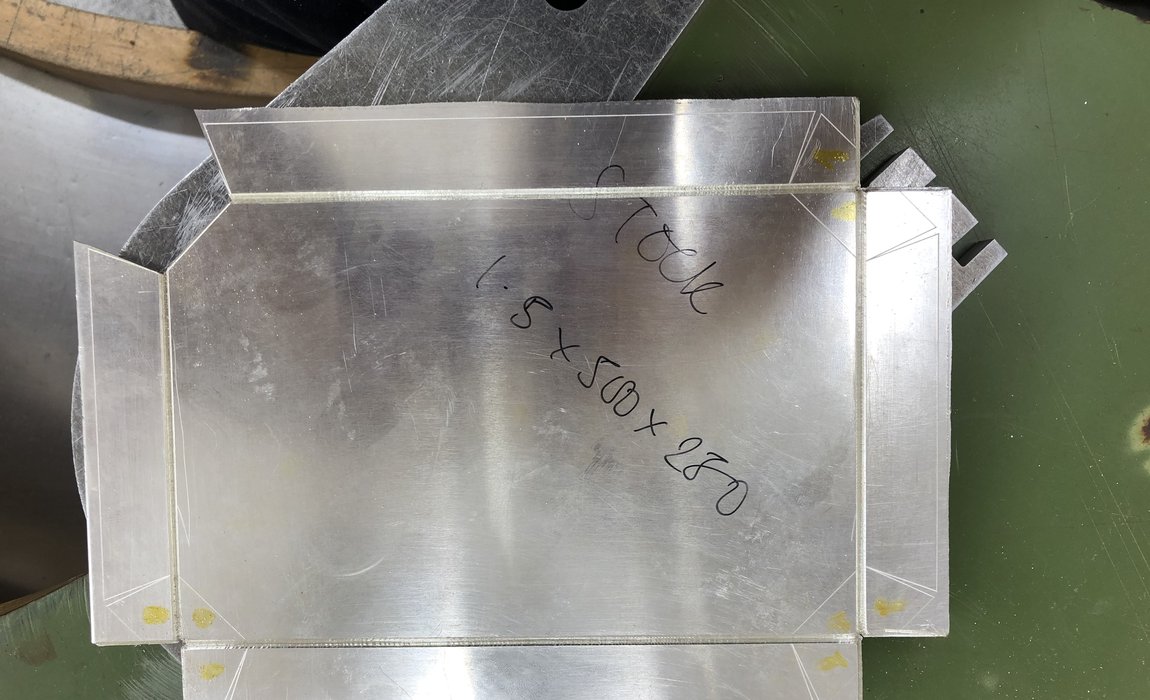 Components of hip flask including stamping to form the shape.
Components of hip flask including stamping to form the shape.
 Frame work for box.
Frame work for box.
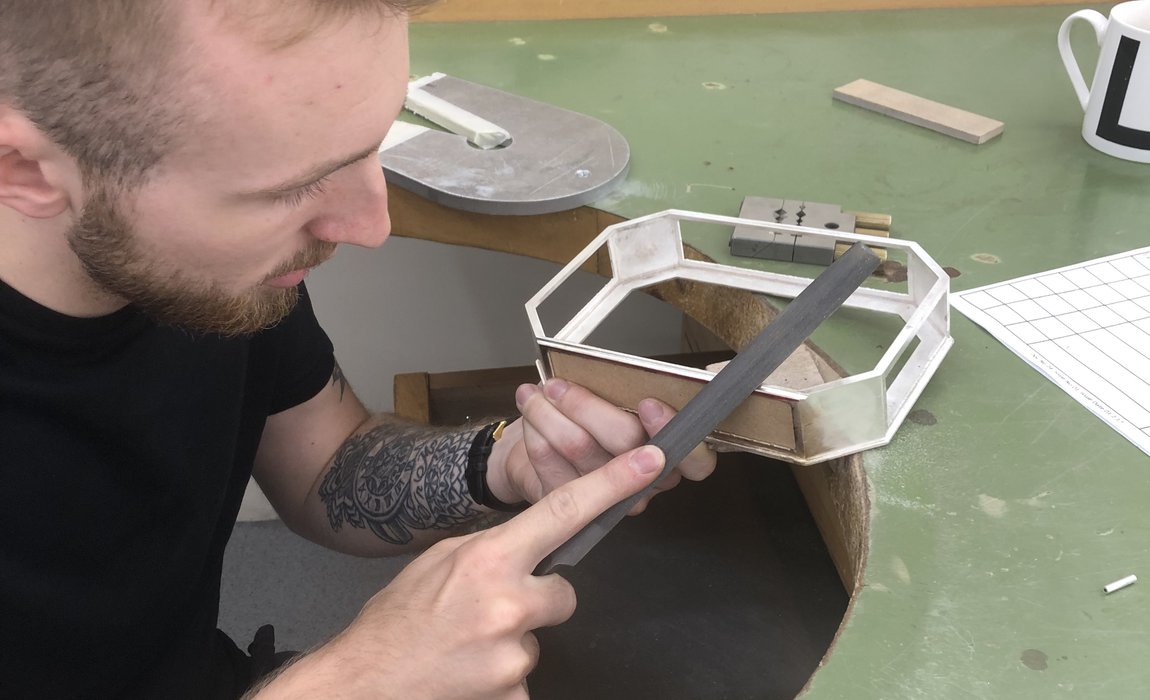 Setting the angle for the joint.
Setting the angle for the joint.
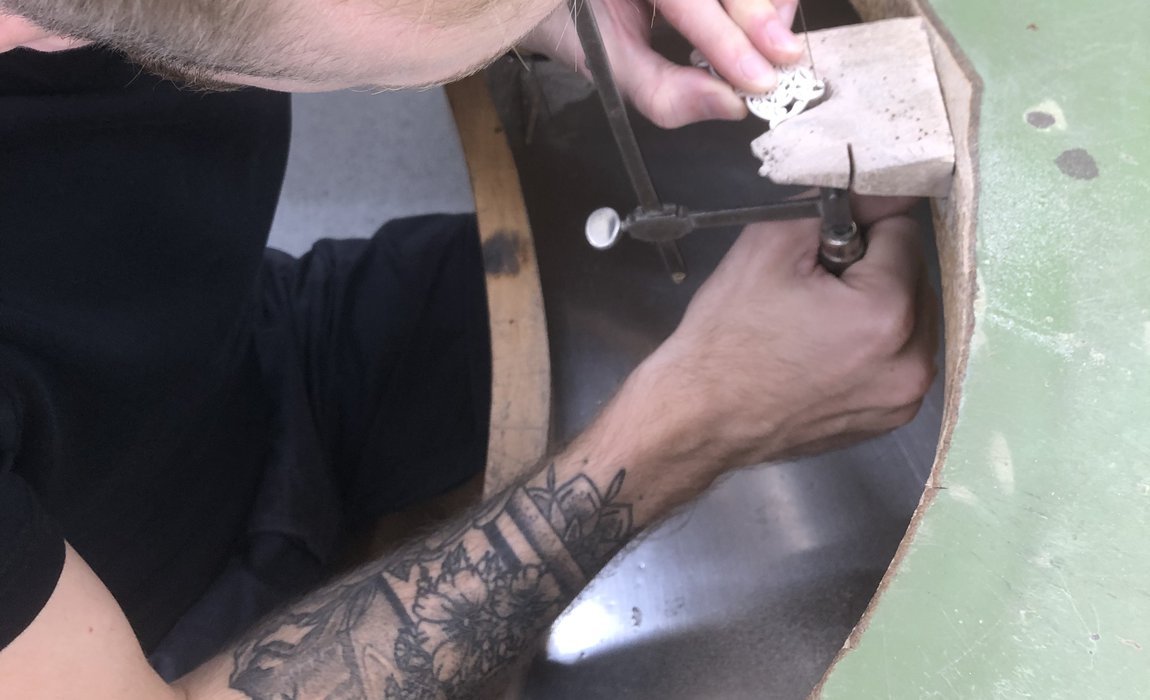 Piercing out decorative panel.
Piercing out decorative panel.
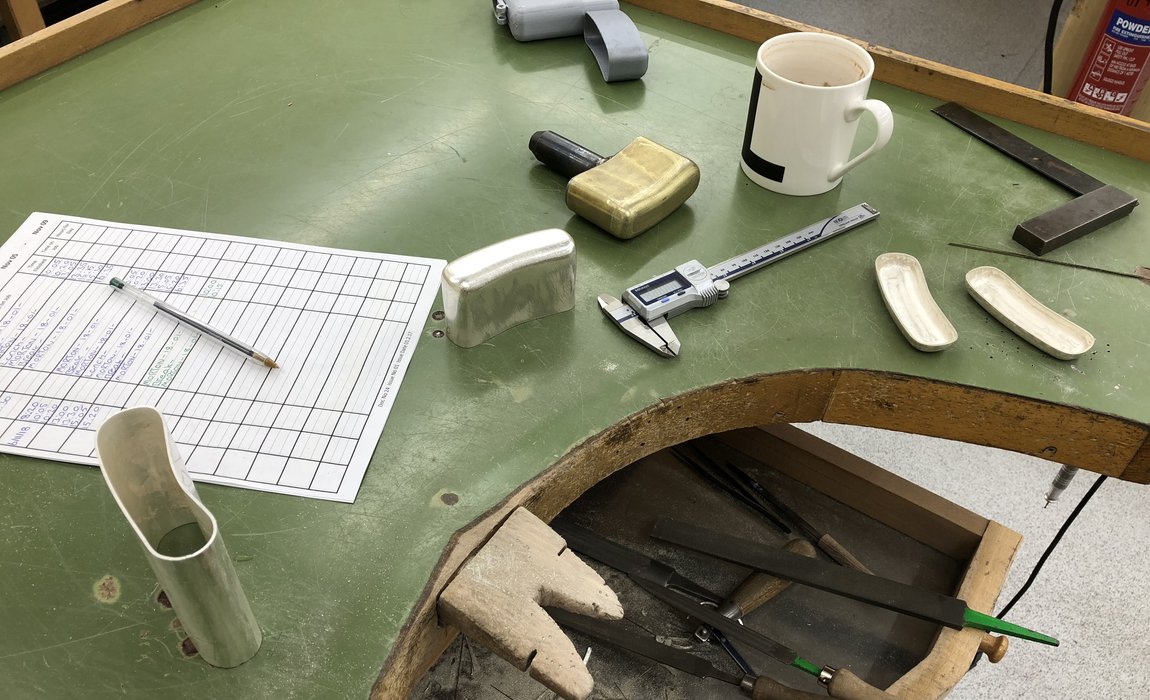 Components of hip flask including stamping to form the shape.
Components of hip flask including stamping to form the shape.
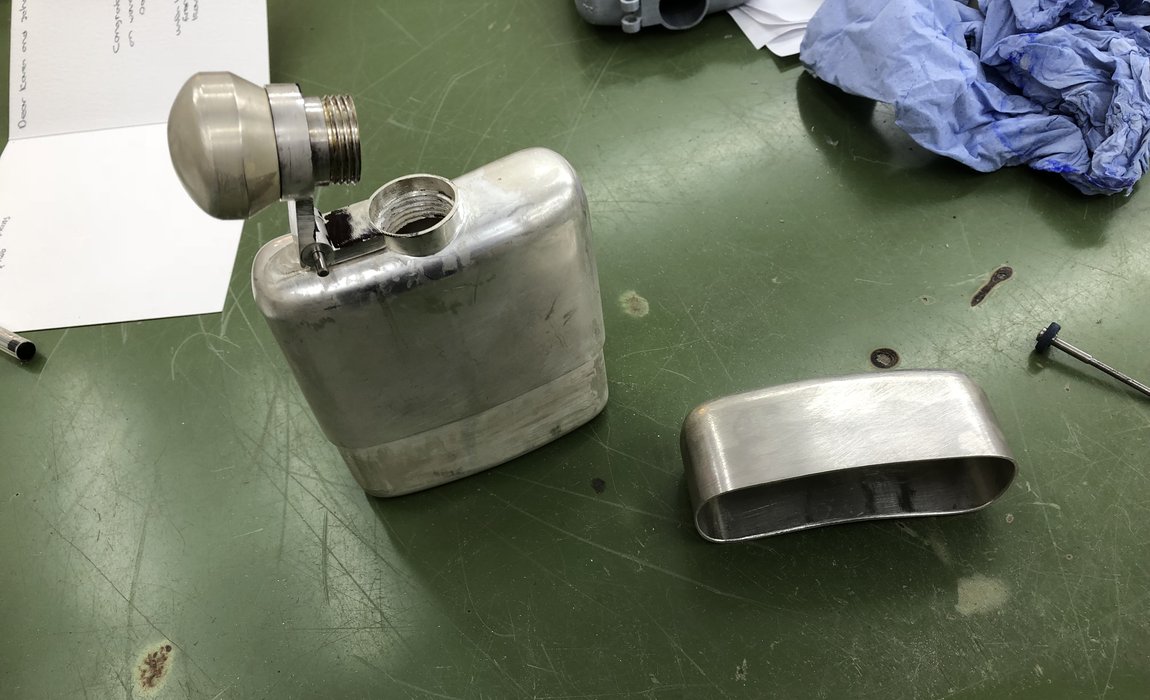 Hip flask with working screw top and removable cup.
Hip flask with working screw top and removable cup.
Training or qualifications: How can I become a smallworker?
To be a smallworker you need to be fully trained either by pursuing an apprenticeship or course in silversmithing or jewellery making. Because of the high level of craftsmanship required, practical training is essential as well as a commitment to learn from those that are more skilled.
There are several ways to start out in the jewellery, silversmithing and allied industries. To become trained as a smallworker you may choose to go straight into a job, apprenticeship or relevant course at a college, university or training centre. There are very few skill-specific qualifications available, but many courses provide an introduction to a range of creative skills. To find out more about different options and your potential route into a creative career within the goldsmithing industry click here.
What can I earn as a smallworker?
As an apprentice or someone who is training you should be paid at least the National Minimum Wage for your age and this rate should increase as you get closer to completing your training. Apprentices undertaking traditional training may start out earning around £12,000 – £13,000 per year and be closer to £17,000 – £18,000 at the end of their four-year apprenticeship. Once you have completed your training your earnings will vary depending on your skill and employment status.
Smallwork is a niche skill and there are a limited number of craftspeople who are practising smallworkers within the UK. Many smallworkers will be trained in a wider range of complementary goldsmithing skills. Doing this may help ensure you are more widely employable. Due to the complexity of the pieces normally produced by a smallworker wages and rates may be higher than a silversmith.
Salaries for an employed smallworker can start at around £22,000 - £25,000 per year in the first few years after training. This can rise to £35,000 - £45,000 for a mid-career smallworker and can reach over £50,000 for the most experienced and skilled smallworker working for a top silversmithing company.
If you are self-employed, being a smallworker can be well paid if you have regular clients or constant sources of work, but it can be difficult if you are commissioned ad hoc. As a smallworker you may work on a commission basis and agree a fee. This is normally costed per job. Rates will depend on your experience, the materials being used, and the complexity of the piece required by the client. No matter how you work your reputation is extremely important as the goldsmithing industry often operates on word of mouth recommendations and trust.
What industry membership bodies can I join?
The Goldsmiths’ Centre offer a range of membership options for people at different stages of their career. Joining a membership body or keeping up to date with industry events allows you to create a network with like-minded individuals. They might also run workshops to acquire new skills. See for example:
The Goldsmiths’ Centre
Association for Contemporary Jewellery
Cockpit Arts
Contemporary British Silversmiths
Craft Central
Crafts Council
Craft Northern Ireland
Incorporation of Goldsmiths
Institute of Professional Goldsmiths
National Association of Jewellers
Sarabande
The Silver Society
Meet the makers

I chose a career in smallwork because I was brought up around it my whole life. So, when it came to choosing what specialist subject I wanted to do my apprenticeship in, I felt that my skill base always leaned towards smaller, intricate pieces over anything else.
Examples of smallworker work
The Goldsmiths’ Company Collection includes over 8,000 pieces of antique, domestic & contemporary silver, jewellery and art medals which were made in Britain between 1350 and the present day. The Company continues to purchase, and commission pieces each year and new contemporary pieces must demonstrate innovative design combined with excellent craftsmanship. Pieces are acquired from both established craftspeople and rising stars.
The Goldsmiths’ Company also retains an image archive of Masterpieces created by apprentices in their final year on the Goldsmiths’ Company Apprenticeship Scheme. These pieces take around 350 hours to make and demonstrate the skills learnt throughout an apprentice’s training. A selection of these pieces, which demonstrate smallwork, can be seen here:
 Sam Hunter (SVS Designs Ltd), The Black Swan Pirate Ship, © The Goldsmiths’ Company 2017.
Sam Hunter (SVS Designs Ltd), The Black Swan Pirate Ship, © The Goldsmiths’ Company 2017.
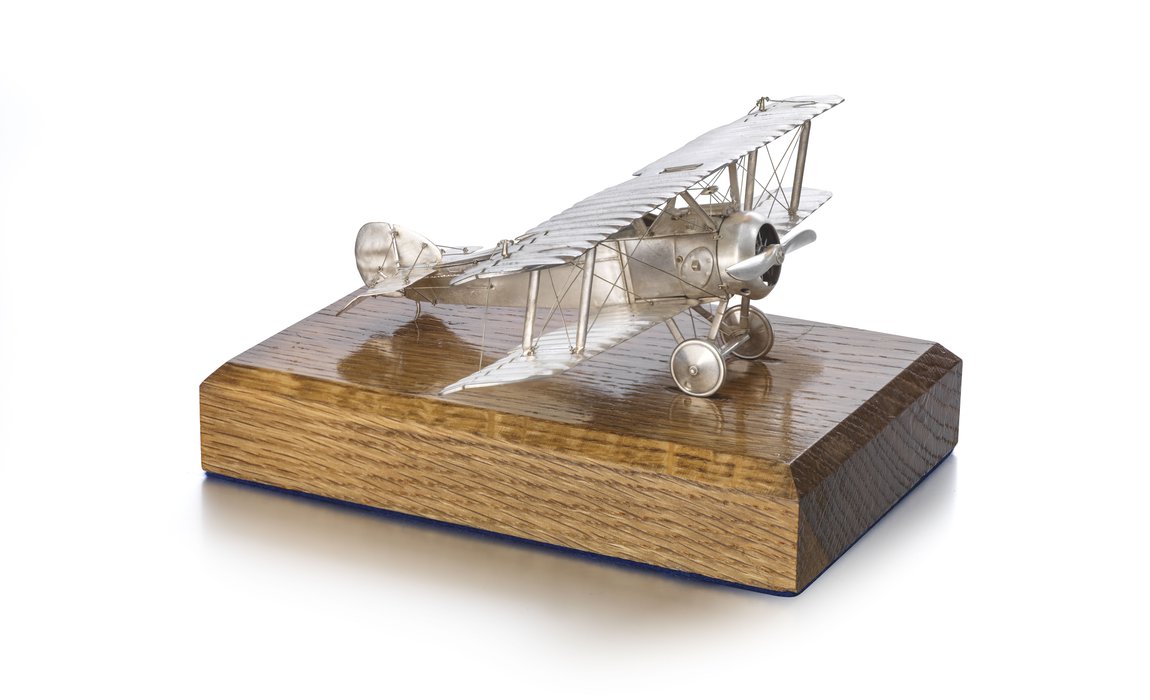 Hugo Johnson (Richard Talman, RTFJ), 1 to 48 scale Sopwith Camel © The Goldsmiths’ Company 2018
Hugo Johnson (Richard Talman, RTFJ), 1 to 48 scale Sopwith Camel © The Goldsmiths’ Company 2018
Further information
There are many reputable sources of information relating to the jewellery, silversmithing and allied industries. Whether you are trying to find information on technical skills, processes, materials, makers or inspiration some resources relating to smallwork can be found below:
The Goldsmiths’ Company Library relates specifically to gold and silversmithing, jewellery, assaying and hallmarking, precious metals, and the City of London and its guilds. The Library includes 8,000+ books and 15,000+ images, magazines, periodicals and journals, technical guides, films, special research collections, design drawings produced during the early and mid-twentieth century by British or UK-based craftspeople and subject files on a wide range of industry related topics. The Library is also responsible for the Company’s archives, which date back to the 14th century.
Smallwork related books include:
- Prof. Dr. Erhard Brepohl, The Theory and Practice of Goldsmithing, Maine, Brynmorgen, 2001
- Proceedings of the Santa Fe Symposium on Jewelry Manufacturing Technology, Albuquerque, Met-Chem Research Inc., 1987-1991 and 1995-present
- Anastasia Young, The Workbench Guide to Jewelry Techniques, London, Thames and Hudson, 2010
